The current situation in Ukraine and the significance of the Ukraine Mine Action Conference 2025 in Tokyo


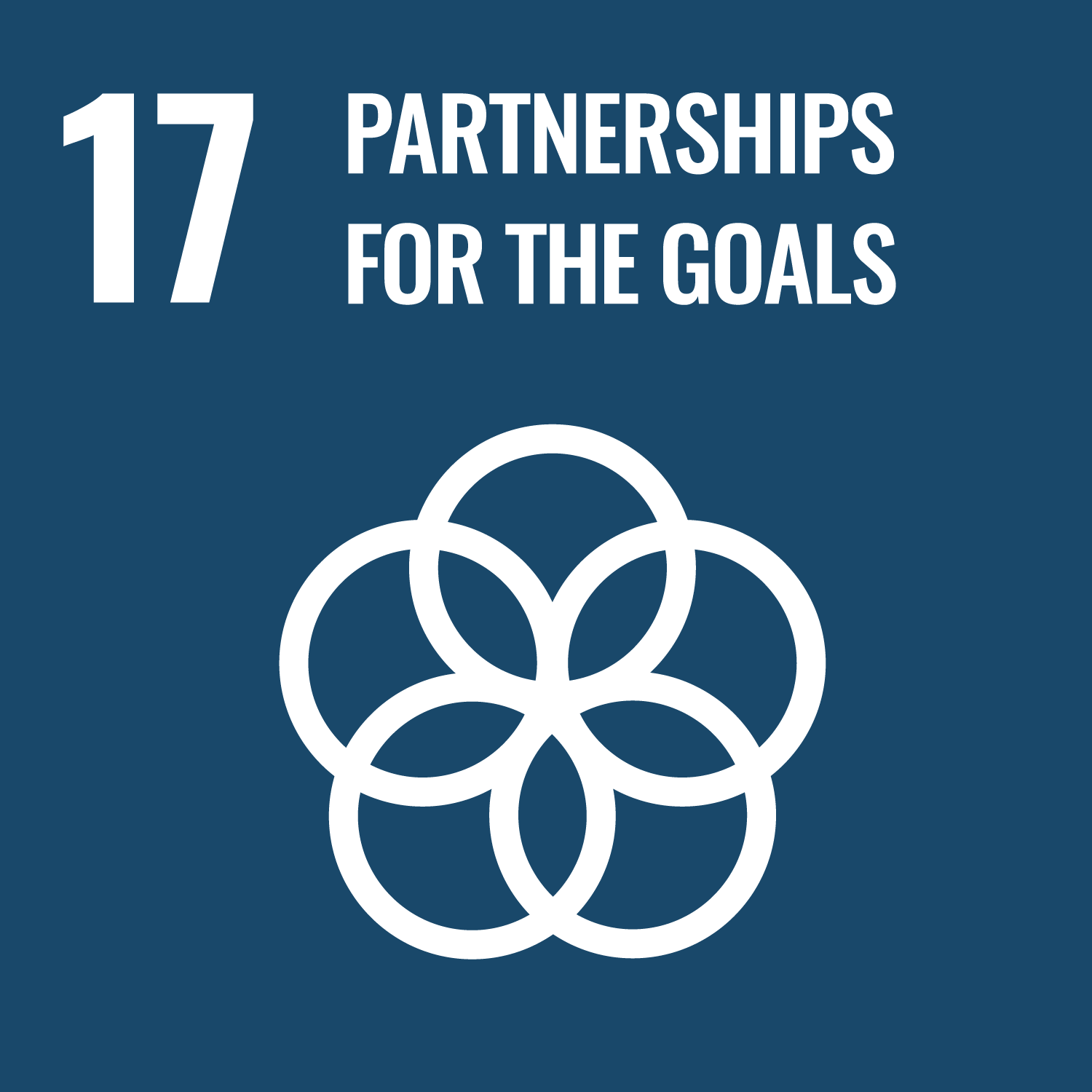
2025.11.18
The Ukraine Mine Action Conference, hosted by Japan, was held in Tokyo on Oct. 22 and 23. Since Russia's invasion in 2022, the Japan International Cooperation Agency (JICA) has been actively supporting Ukraine by providing mine detectors and demining machines, as well as conducting training for the operation and maintenance of equipment. This report highlights JICA's initiatives and the significance of the conference from the frontlines of mine actions.
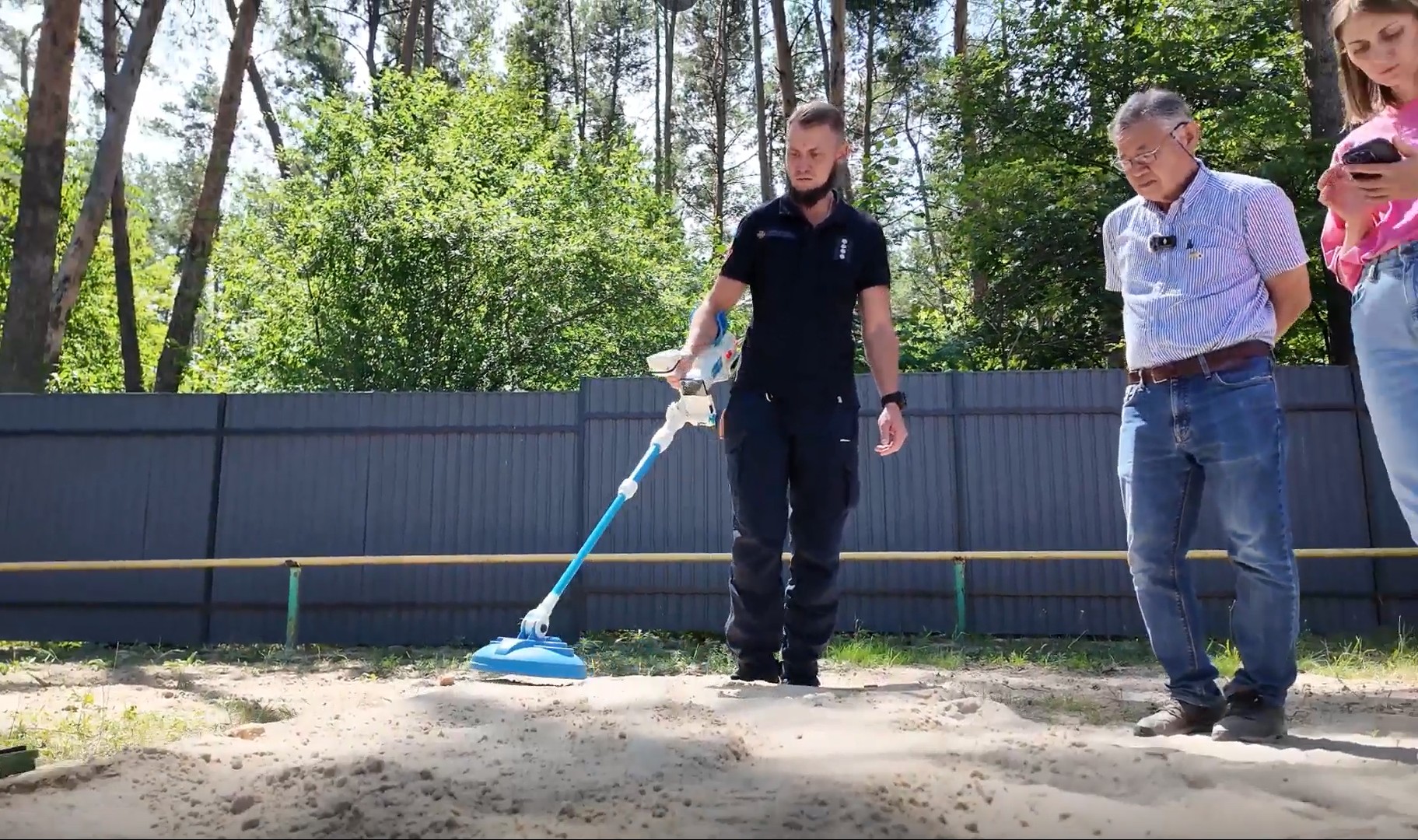
Using the new "ALIS" mine detector, Dmytro searches for a mock mine. Observing on the right is Sato Motoyuki, an emeritus professor from Tohoku University and the device's developer.
As Dmytro, a deminer, waved the detector over the ground with his right hand, a sharp beep echoed. It was July 15, 2025, in the outskirts of Ukraine's capital Kyiv. A training session was in progress for the new "ALIS" mine detector provided by JICA. The detector's sound signaled the presence of a buried mock mine.
"Is this part supposed to be the mine?" Dmytro asked the Japanese instructor as he pointed to the screen of the smartphone mounted on the detector.
The "ALIS," developed by a Japanese company, displays scanned underground images on a smartphone screen, in addition to functioning as a metal detector. It is difficult to distinguish between mines and scrap metal using regular metal detectors, which rely solely on sound. In fact, it's said that just one in 1,000 objects detected by these devices is actually a mine. However, ALIS can identify the depth and shape of objects without digging them up, allowing for more efficient mine detection compared to conventional detectors. The training this day focused on using its updated software.

Dmytro checks the underground scan on a smartphone using the "ALIS" detector.
"It has become easier to handle and the images are clearer than the previous version. With this, we can proceed with mine clearance more efficiently and safely."
Dmytro, having completed the training, looked satisfied.
According to the State Emergency Service of Ukraine (SESU) and other organizations involved in humanitarian mine action, as of March 2025, approximately 23% of Ukraine's territory was contaminated with mines and unexploded ordnance. Over 1 million explosive devices have been disposed of so far, but many areas remain untouched, and it is said that it could take decades to clear all of them. Casualties continue to rise, with 354 killed and 932 injured by landmines and unexploded ordnance as of September 2025.
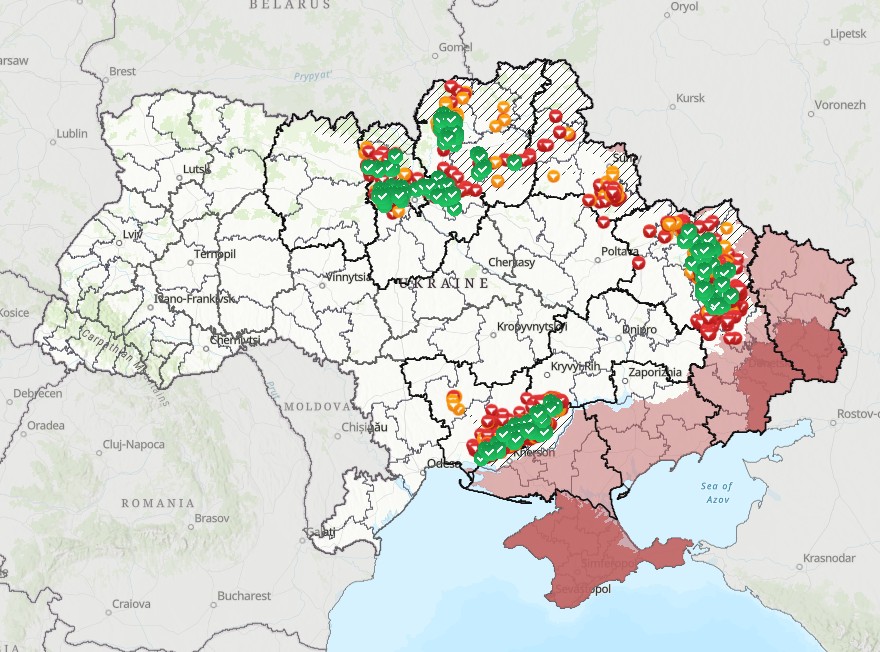
Mine contamination in Ukraine. Green check marks indicate cleared areas, while red triangles represent uncleared regions. Through past survey and clearance activities, some 35,000 square kilometers of land have been deemed "safe," according to the State Emergency Service of Ukraine's website.
Since 2023, JICA has been cooperating in Ukraine's recovery and reconstruction efforts. To date, JICA has provided SESU with 54 ALIS detectors and 22 Japanese-made demining machines. Training sessions have been conducted for SESU personnel on the operation and maintenance of the mine detectors and demining machines. The training session attended by Dmytro is part of this initiative.
Asada Yoshinori, a JICA expert involved in mine action in Ukraine, said, "Dmytro was at the site of an explosion that took the life of a colleague during demining in Zaporizhzhia province. Some anti-personnel mines can detonate with even minimal pressure, making demining operations perpetually dangerous. Japan's technological expertise and experience can contribute significantly to Ukraine's recovery and reconstruction."
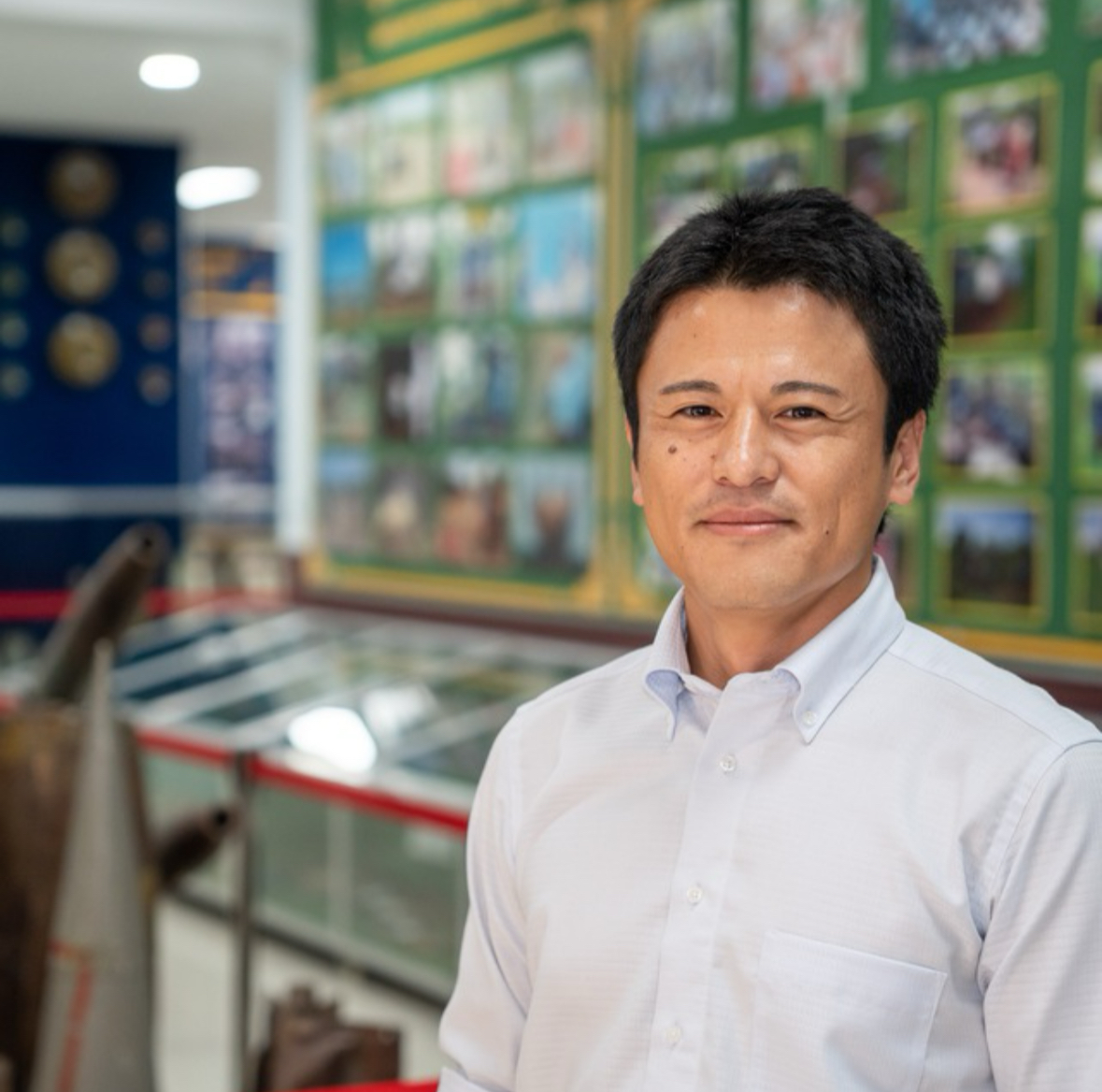
Asada Yoshinori, a JICA expert involved in mine action in Ukraine.
Why is Japan, a country that has not been a battlefield since World War II, able to contribute to mine action in other countries? The answer lies in Cambodia.
In Cambodia, an estimated 4 to 6 million landmines were buried across the country during a civil war that lasted over 20 years from the 1970s. Even after the war ended, the landmines remained, and people continued to lose their limbs or their lives to the weapons.
Since 1998, JICA has been assisting the Cambodian Mine Action Center (CMAC) by providing demining equipment, fostering staff, and strengthening organizational management capabilities. As a result, CMAC's annual mine clearance capacity expanded from about 10 square kilometers in 1999 to approximately 282 square kilometers in 2023, a 28-fold increase.
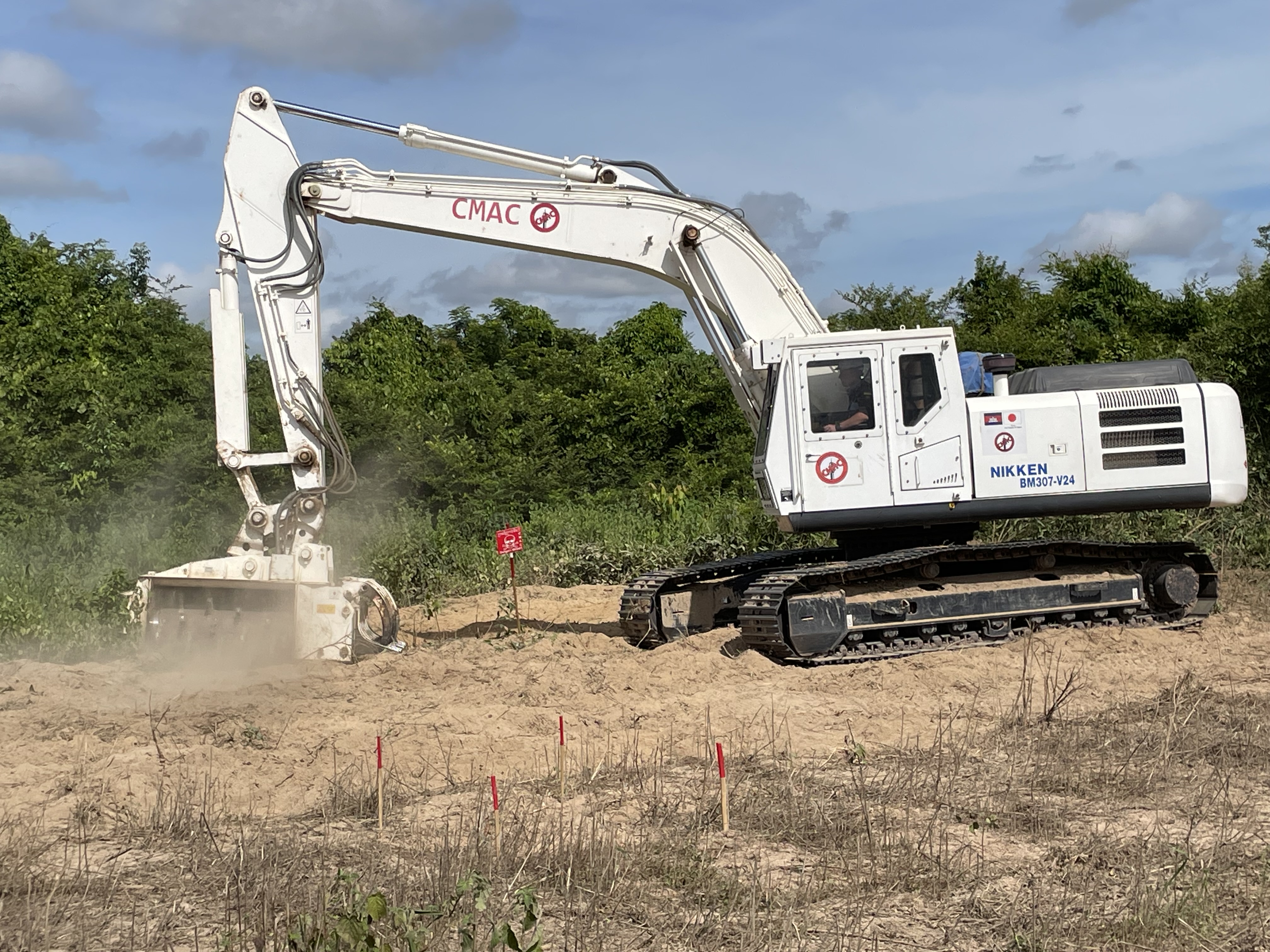
Mine clearance in Cambodia.
With the accumulation of know-how and expertise in mine clearance, CMAC has been conducting training for countries engaged in demining efforts in collaboration with JICA since 2010. The number of participants has exceeded 600, including government officials from countries such as Colombia, Laos, Angola, and Iraq.
Personnel from Ukraine's SESU have also been participating in training sessions in Cambodia since 2023. In July 2024, they learned how to operate a shovel-type demining machine developed by a Japanese company.
Yokoyama Hirono, a consultant involved in the demining machine training for SESU, reflected, "The training was attended by 14 people. Many participants were already accustomed to handling heavy machinery, and the on-site instructors were impressed with their quick progress. I believe this is driven by their strong desire to restore their country as soon as possible."

Yokoyama Hirono, right, who is involved in the training in Cambodia.
CMAC has also been involved in the development of the new ALIS mine detector and the training conducted in Ukraine. JICA's long-standing technical cooperation has bridged Cambodia's expertise to contribute to mine action efforts in Ukraine.
At the Ukraine Mine Action Conference held in Tokyo on Oct. 22 and 23, discussions centered on humanitarian mine action in Ukraine, and the initiatives by JICA were also highlighted.
Komukai Eri, Senior Advisor on Peacebuilding at JICA who is involved in mine action, stated, "The past two conferences were both held in Europe. This time, with the conference being held outside of Europe for the first time, there were high expectations from various countries."
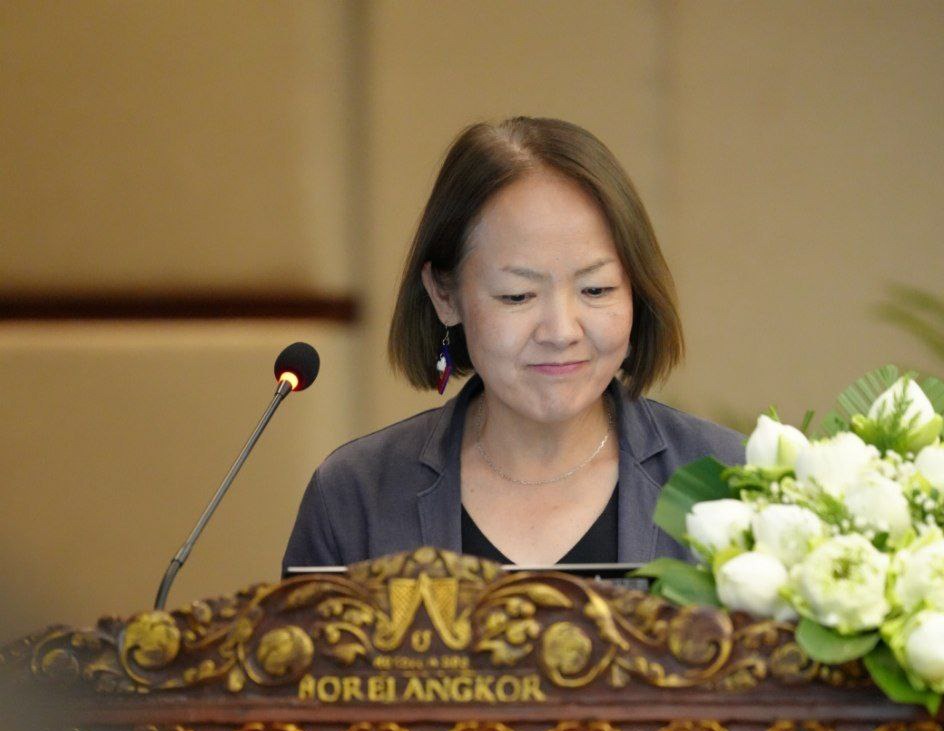
Komukai Eri delivering a speech at a ceremony for Ukraine-Cambodia knowledge sharing.
At this conference, Japan announced the Ukraine Mine Action Support Initiative, based on three pillars:
1. Strengthening human resources and technology
2. Ensuring seamless transition to recovery and reconstruction: "The Nexus"
3. Diversifying and strengthening partnerships with third countries and international organizations
The term "Nexus" emphasizes the process of connecting mine actions to recovery and reconstruction. Foreign Minister Motegi Toshimitsu emphasized Japan’s commitment to supporting efforts enabling all people in Ukraine to live free from the threat of landmines, in a just and lasting peace.
Until the day when all landmines are cleared, Japan will continue to work together with countries around the world in Ukraine's mine action efforts and its recovery and reconstruction.
scroll